Dry fry rice noodles with beef
Dry fried beef river is a Cantonese dish made from materials such as sprouts, river meal and beef. One of the traditional snacks in Guangdong. It was invented in late Qing Dynasty and early Republic of China.
River powder, also known as Shahe powder, originates from Shahe Town, Guangzhou. Usually boiling is done with soup or fried. Stir frying is divided into wet stir frying with sour sauce and dry fried without GAD juice. Dry fried Niu river is considered to be a great test to test Guangdong chefs cooking techniques.
At the end of the Qing Dynasty and the beginning of the Republic of China, Guangzhou's restaurants were divided into three modes of operation. One was a restaurant, the other was a tea house, and the other was a noodle stall commonly known as "Erli Hall". That is to say, "River Flour" was a popular food mixed with "noodles" and became "Erli Hall".
In 1938, Guangzhou, which was known as "food in Guangzhou", has been withered by Japanese invaders. A businessman named Xu Bin had to finish his restaurant business and run a porridge noodle shop on Yang Lane Road. Because in the past, fried flour was processed by "wet stir-frying" method. One day, raw flour just ran out. Xu Bin wanted to go to the Japanese puppet area to buy it. Who knows that the Japanese puppet card is not allowed to pass and cannot buy it? At this time, there was a traitor in the shop to eat fried powder, Xu Bin's father Xu Bochou said that no raw powder can not be fried, but the traitor thought Xu Bochou tricked him, and even pulled out a pistol threat, insisting on eating. Xu Bin just came back. Seeing this, he had no choice but to go into the kitchen and cook red iron wok, add sprouts to stir-fry the river flour, and then grab the tender oil to cook the beef to deal with the traitor. Who knows, the traitor, but he will come to visit every night. At that time, it was not easy for Xu Bin to earn a few money to buy raw meal. Seeing that this stir-frying method was accepted, he couldn't ask for it. So, he made great efforts in the technology, blindly stir-frying Niuhe came into being, and added Guilin chili sauce, which made Xu Bin's "porridge noodles" stall very popular for a while.
After the War of Resistance Against Japan, Dongtian Restaurant took the lead in introducing this method to the end of the feast, and this cheap street snack began to ascend the "hall of elegance".
Ingredients: beef (150 grams), river meal (500 grams)
Condiments: mung bean sprouts (250g), leek (moderate amount), onion (moderate amount), onion (moderate amount), salt (moderate amount), raw soy sauce (moderate amount), old soy sauce (moderate amount), sugar (moderate amount), peanut oil (moderate amount)
1, boil the pot and put it into dry river powder.
2. After boiling, drain and drain.
3, wash bean sprouts and drain the water.
4, cut onion into silk.
5, beef slices first use salt, cooking wine, old soy sauce, salad oil pickled for a while.
6. Fry the beef slices in a frying pan.
7. Wait until the beef is discolourfully.
8, another oil fired pot of fragrant onion.
9, add bean sprouts to stir fry.
10. Add soft boiled powder and mix with chopsticks.
11, first adjust the sauce: add oyster sauce, soy sauce, old soy sauce and sugar, sesame oil stir evenly.
12, add the sauce to mix well, sprinkle the scallion, and then put the pan into the pan.
Dry-fried Niuhe River has oily luster, tender and tender aroma of beef, smooth tendons of river powder, dry and juiceless dish, delicious taste and rich ingredients.
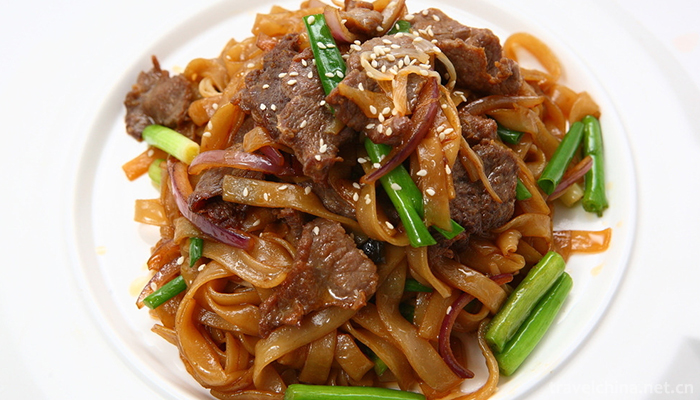
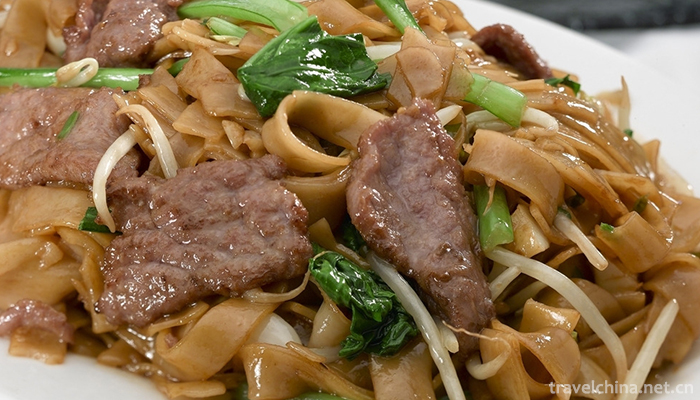
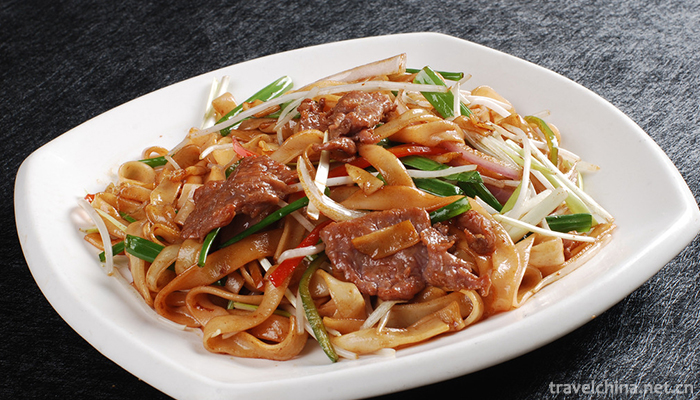

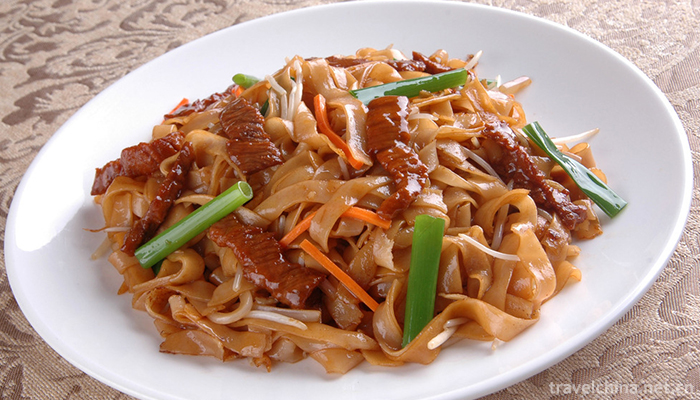
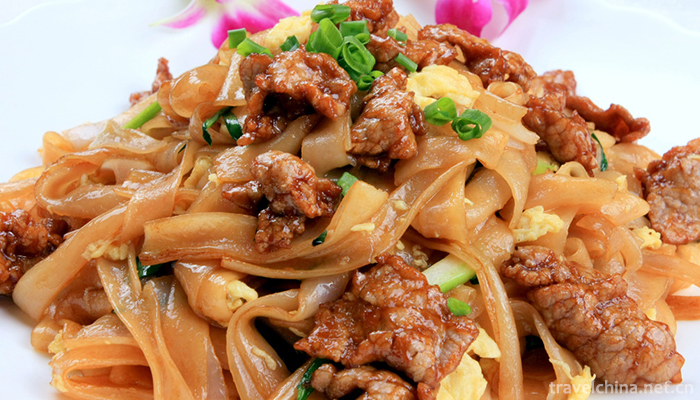
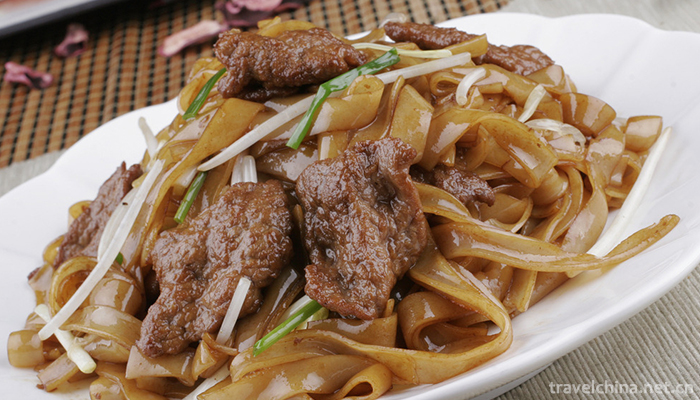
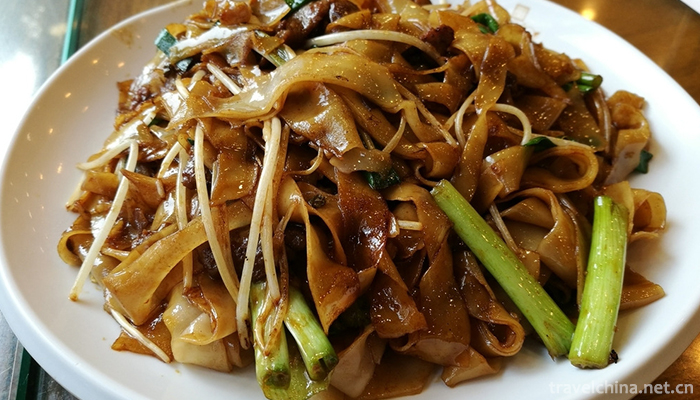


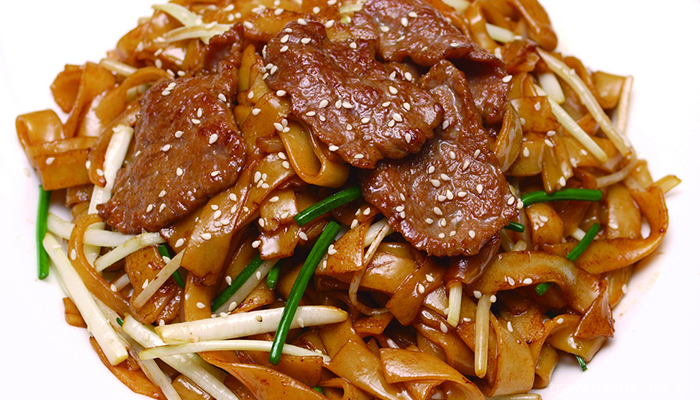
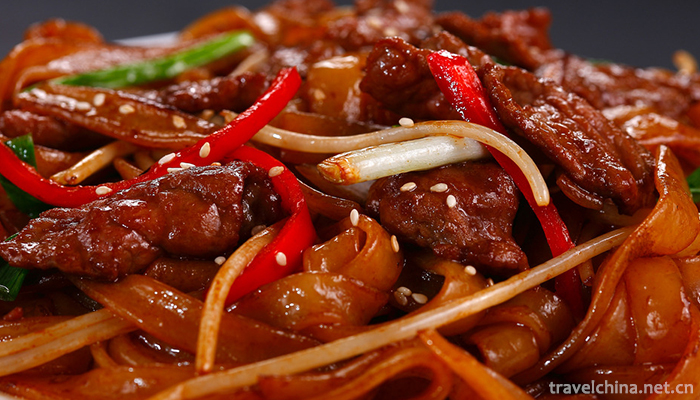
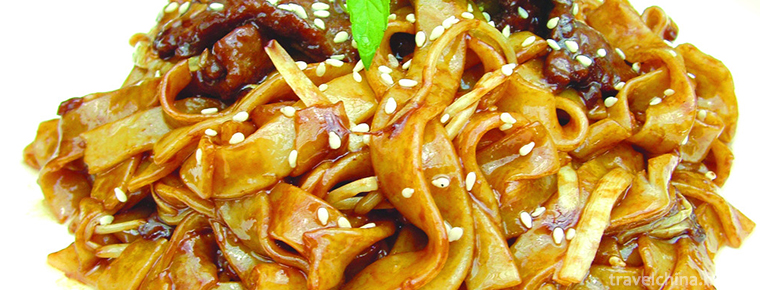
-
1.Shanghai Century Park
Century Park, formerly known as Pudong Central Park, is a relatively large park in Pudong area, covering 140.3 hectares. It is located in the southeast of Pudong Huamu
Time 2018-12-19 -
2.China Aviation Museum
China Aviation Museum is the first large-scale open aviation museum in China. It is located at the foot of Datangshan, Changping District, Beijing. After many years of closure
Time 2018-12-22 -
3.Guangyou Temple Scenic Area
Guangyou Temple is located in Liaoyang City, Liaoning Province, with Baita in the West and moat in the east. It covers an area of 60,000 square meters. The central axis of the north and south is archw
Time 2019-01-13 -
4.Huashan pictographs
Huashan rock paintings are located in the Zuojiang River and its tributary Mingjiang River valley of Chongzuo City, Guangxi (covering Ningming County, Longzhou County, Jiangzhou District and Fusui Cou
Time 2019-01-17 -
5.Qingshuihe Ming Great Wall Site
The site of the Great Wall of the Ming Dynasty begins at Jiayuguan in Jiayuguan City in the west, passing through Jiuquan, Gaotai, Linze, Zhangye, Shandan, Yongchang, Minqin
Time 2019-02-07 -
6.Western Henan Grand Canyon
Western Henan Grand Canyon Scenic Spot is located in the west of Henan Province, which refers to the area west of Zhengzhou, the capital of Henan Province, including Luoyang
Time 2019-03-09 -
7.Definite day harmonics
Dingriluo Harmony Dingriluo Harmony, the second batch of national intangible cultural heritage list of the People's Republic of China. It is the main form of folk singing and dancing in Dingri County
Time 2019-04-27 -
8.Construction Skills of Official Ancient Architecture
In the process of construction and maintenance of the Palace Museum ancient buildings, a complete set of traditional palace building construction techniques with strict shape has been formed on the ba
Time 2019-05-01 -
9.Running curtain
Running curtain originated in the Spring and Autumn Period and Warring States Period, formed in the Qin and Han Dynasties, flourished in the Song, Yuan, Ming, Qing Dynasty and the early Republic of Ch
Time 2019-06-09 -
10.Fan making Techniques
Suzhou Fan is a special product of Suzhou. It is famous for its elegance, delicacy and artistic characteristics. Including folding fan, sandalwood fan and silk Palace fan, collectively known as "
Time 2019-07-25 -
11.Chengdu Giant Panda Base tourist service
The tourist center is located 40 meters to the left of the entrance door of the scenic area (first floor of the Giant Panda Museum), with a building area of more than 400 square meters.
Time 2020-12-13 -
12.Transportation in Mianyang
By the end of 2018, Mianyang had 20146 km of highways, 412 km of expressways, 268 km of Railways and 57 civil aviation routes.
Time 2020-12-14